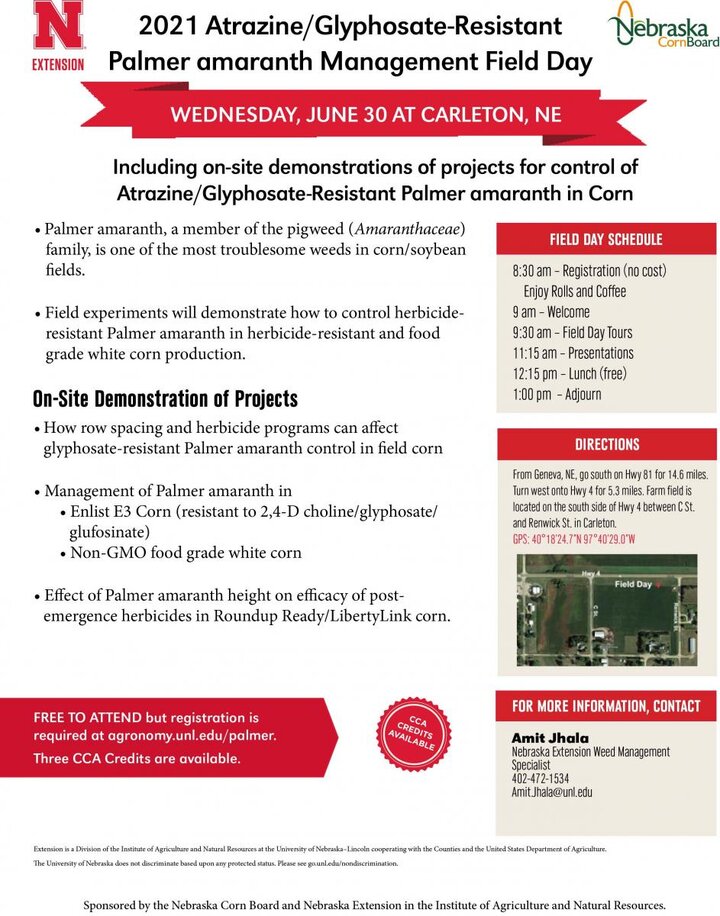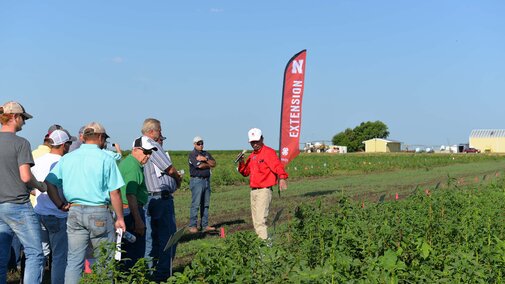
Growers, crop consultants and extension educators interested in management of atrazine/glyphosate-resistant Palmer amaranth are encouraged to attend Nebraska Extension's in-person, outdoor field day, supported by the Nebraska Corn Board, from 9 a.m. to 1 p.m. Wednesday, June 30 near Carleton.
A member of the pigweed family, Palmer amaranth is one of the most troublesome weeds in corn and soybean production fields in Nebraska because of its resistance to atrazine/glyphosate and ALS-inhibiting herbicides. Greenhouse and field dose-response studies have confirmed resistance when atrazine or glyphosate was applied even at higher rates.
At the field day, experiments will demonstrate how to control atrazine/glyphosate-resistant Palmer amaranth in Roundup Ready/LibertyLink corn, Enlist corn and non-GMO white corn in Nebraska.
Three certified crop adviser credits will be available.
There is no cost to attend the field day. However, pre-registration on the field day site is required before 3 p.m. on Monday, June 28.
Directions to the field day: From Geneva, go south on Hwy 81 for 14.6 miles, turn west onto Hwy 4 for 5.3 miles. Site is located on the south side of Hwy 4 between C St. and Renwick St. in Carleton. GPS coordinates: 40°18’24.7”N 97°40’29.0”W.
For more information, contact Amit Jhala at 402-472-1534.

